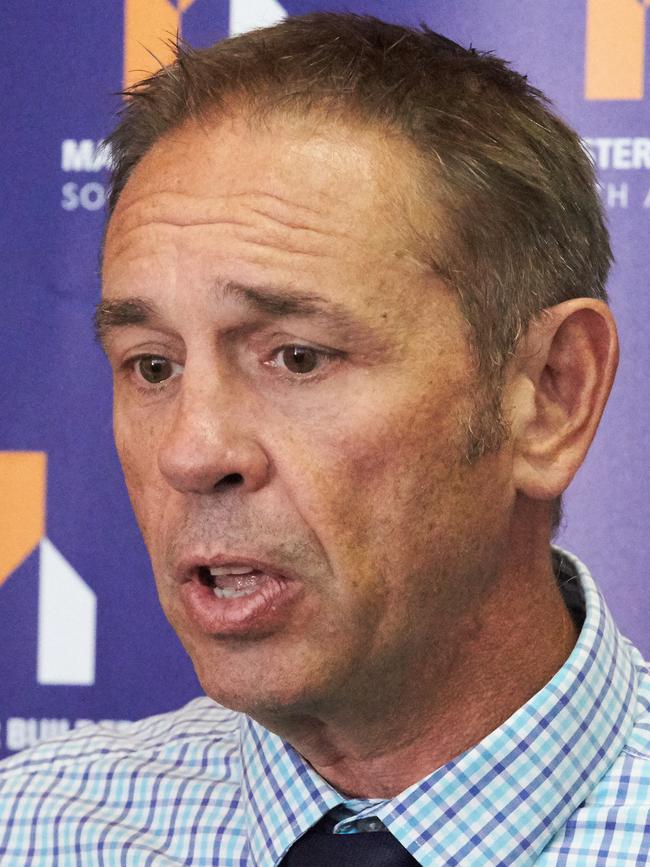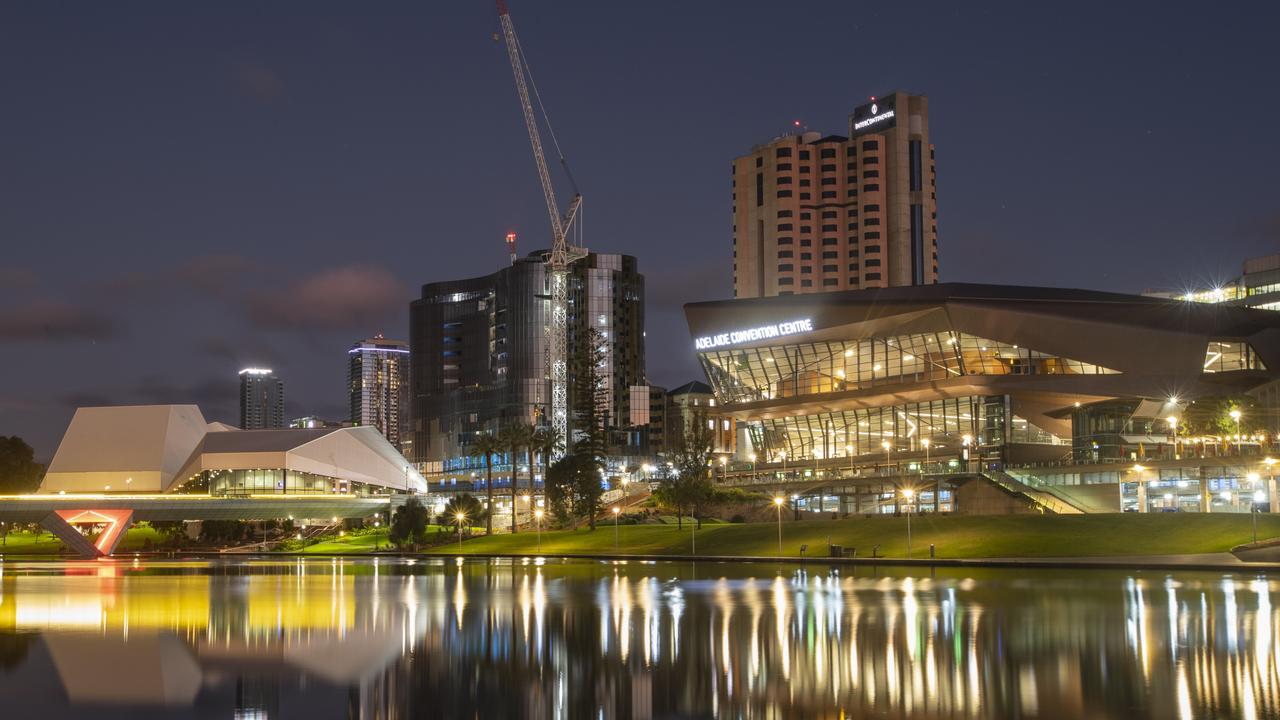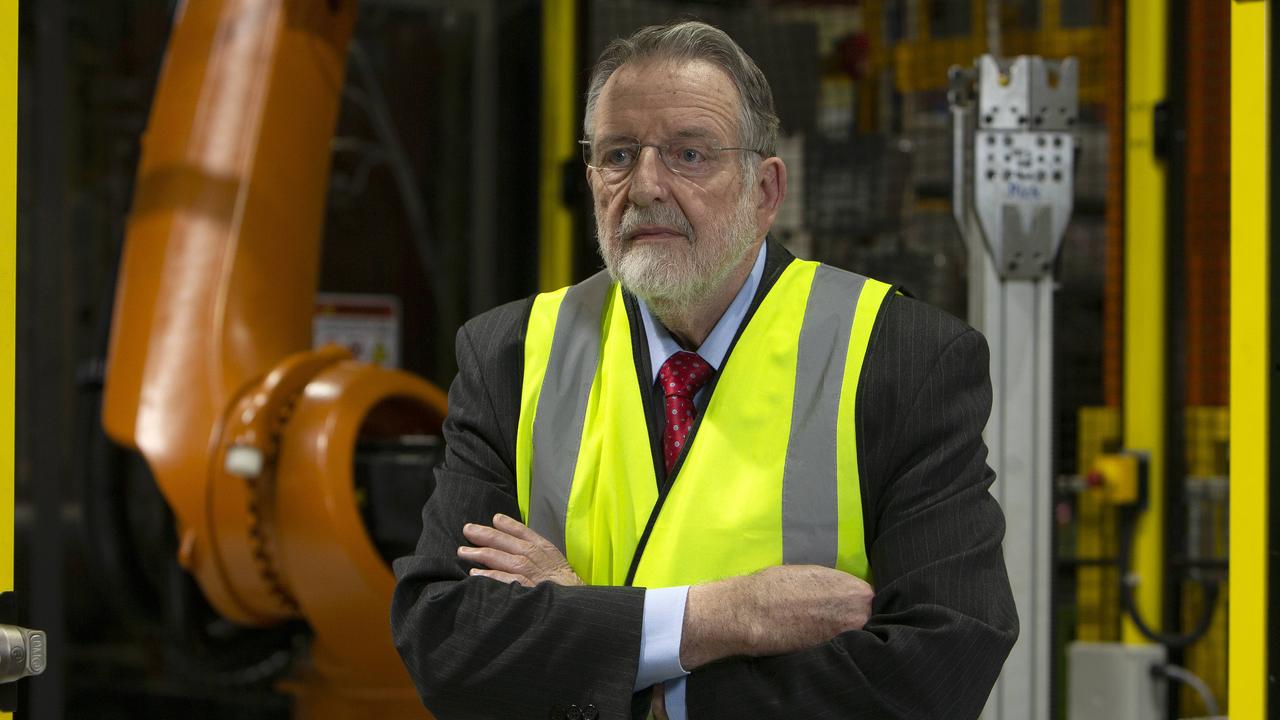Master Builders Association wants sweeping public sector job cuts – not land tax reforms – to fill State Budget black hole
The construction industry’s peak body says land tax reforms could be completely dumped – by sacking more than 16,000 public servants to bring SA in line with the national average.

SA Business
Don't miss out on the headlines from SA Business. Followed categories will be added to My News.
- Every home owner should pay flat land tax: Property Council
- Company failures, job losses in huge construction slowdown
- Property Council’s new idea, already rejected by Treasurer
- How to get the most out of your Advertiser subscription
Cutting the rate of public sector employment to the national average would save the State Government more than $1 billion annually and avoid the need to introduce land tax reform, according to the peak body representing the state’s construction industry.
In its submission to a public consultation on proposed land tax reform, the Master Builders Association (MBA) calls for the controversial aggregation measures to be scrapped, and instead for the State Government to cut costs by trimming the number of public sector employees.
According to figures compiled by the industry group, 16.4 per cent of full-time equivalents (FTEs) in South Australia are employed in the public service, higher than in any other state.

To reduce the rate to a national average of 13.3 per cent, the MBA suggests 16,472 FTEs would need to be cut from the public service, reducing public sector employment to 72,962 FTEs and delivering annual savings of close to $1.4 billion.
“Master Builders SA believes bringing the public sector in line with the national average is a reasonable policy objective,” Master Builders SA chief executive Ian Markos said.
“We aren’t calling for the public sector to be wafer thin, just in line with other states.
“This money could be used to, amongst many other things, further reduce land tax rates and further increase the tax-free threshold.
“Imagine the confidence boost generated by such a strong message, telegraphing that South Australia is open for business.”
The MBA also hit out at the “staggering” number of government executives earning $117,677 or more – close to 1400 in South Australia and “completely unacceptable” according to Mr Markos.
“All this taxpayer-funded largesse, at a time investor confidence in a sector that is a major contributor to jobs and economic growth is getting hammered, is completely unacceptable,” he said.
“Given the obvious scope for savings in the public sector there is absolutely no need for changes to aggregation.”
Treasurer Rob Lucas said the State Government was already under attack from unions affected by public sector cuts.
“We’re not planning any more than we’ve already announced in the budget,” he said.
“It’s a convenient line to push but we’ve announced our public sector plan and we’re already being attacked by everybody for our initiatives to deliver a more efficient public service.”

The latest MBA estimates suggest more than $3.5 billion could be stripped from the construction sector in the next five years.
The housing sector is expected to come under particular strain, with the number of new homes tipped to fall from a high of 13,005 in 2017-2018 to less than 8400 in 2023-2024.
Mr Markos said the land tax proposals came at a particularly difficult time for the industry.
“South Australia’s economy continues to fall behind other states, particularly in the east where strong population and capital growth have gone hand in hand,” he said.
“The only way to turn around this trajectory is a relentless focus on creating a business utopia where people want to live and work.
“The completely unacceptable alternative is South Australia being swamped by a creeping malaise and deteriorating into a ‘cemetery with traffic lights’.”



